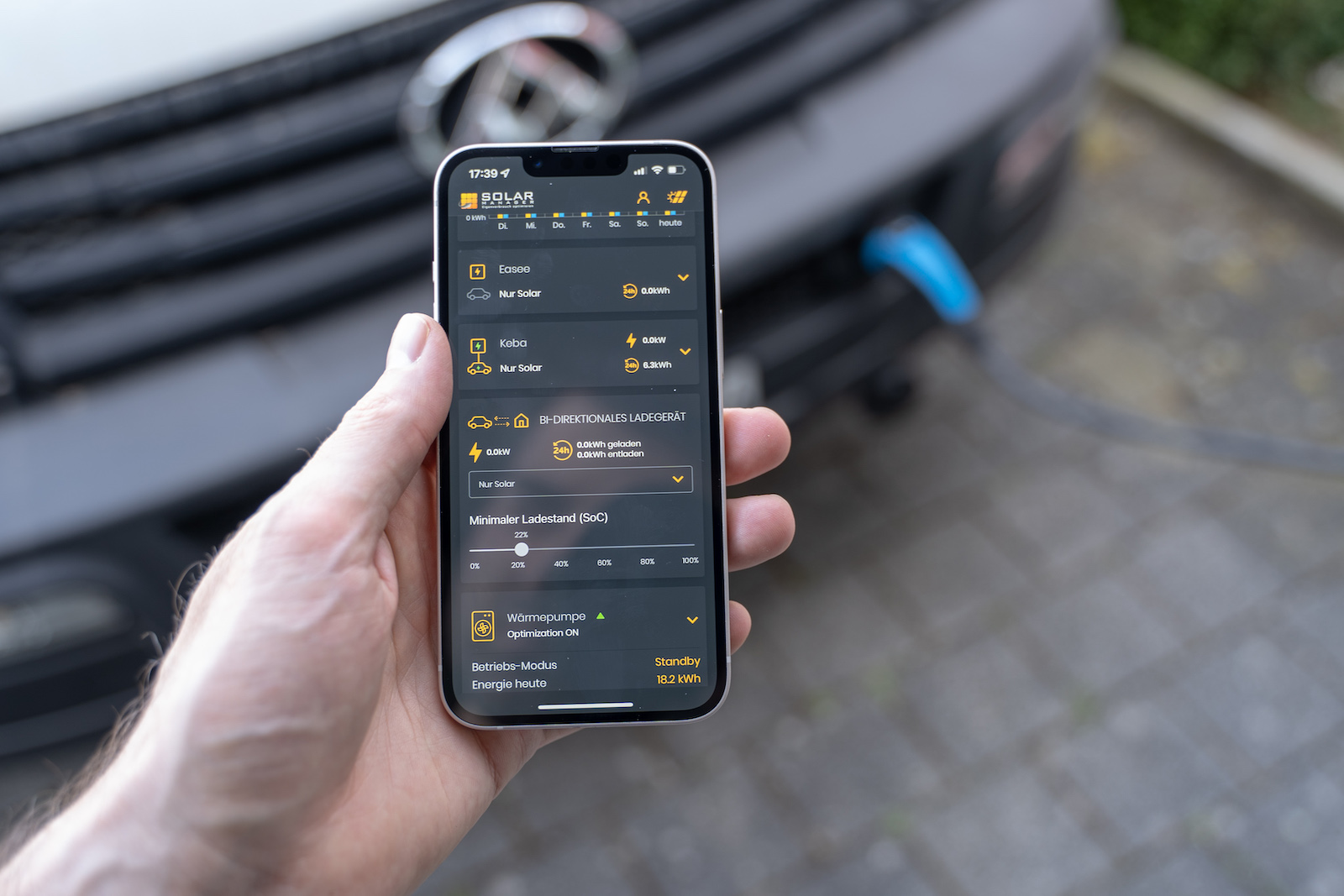Bidirectional charging of electric cars has dominated many media and social media channels again in recent weeks. On the one hand, of course, because of Volkswagen’s announcement and on the other hand because interest in renewable energy is constantly growing. Unfortunately, there is also a lot of misinformation, on the one hand regarding compatible vehicles and on the other hand the different use cases. This article aims to clarify the basic terms and cases:
V2G, V2H or V2L: what does that mean?
The term “bidirectional charging” actually means that the vehicle battery is used as a buffer for electrical energy. In other words, the car is also unloaded instead of just being charged as it was previously possible. The unloading of the vehicle can be divided into different cases, which would be V2H, V2G and V2L, which I would like to explain below…
In the future, the ID.4 will be able to charge bidirectionally, via a DC station
V2X: The umbrella term
V2X bedeutet Vehicle-to-Everything. This includes many different application examples, all of which follow in detail:
V2H: Vehicle-to-Home
This is the case that most EFH owners and companies will be interested in: The vehicle serves as a battery storage system to supply the building when the sun is not shining or for peak shaving to break high load peaks. This application is built with a HEMS (Home Energy Management System) such as the Solar Manager, which regulates the energy distribution in the house according to the owner’s wishes. This article shows how this works easily and regulated today.
Bidirectional charging with Solar Manager
V2L: Vehicle-to-Load
The E-GMP platform from Hyundai offers the typical V2L use case. These include the Kia EV6, Genesis GV60 and the Hyundai Ioniq 5. Devices can be supplied directly with 230V using a special adapter that is connected to the Type 2 socket on the vehicle. Vehicle-to-load is typically a simple inverter for supplying end devices. However, this cannot be operated in parallel with the grid, so it is a pure “island solution” for direct use by consumers. Here is an example of how I create an ID with the Genesis. 4 loaded.
Vehicle to Load (V2L) am Ioniq 5 getestet
V2G: Vehicle-to-Grid
With vehicle-to-grid technology, the electric car is not used to power a building, but rather the discharge is fed back into the grid. Here the vehicle is charged or discharged based on different factors to stabilize the power grid. V2G is still a project-based business model that will become more relevant in the coming years.
V2B: Vehicle-to-Buiding
The case actually corresponds to the V2H case with the difference that here several vehicles supply power to a “large building” with several parties. Either to increase self-sufficiency or to break load peaks – so-called “peak shaving”.
Easy integration into the home energy management system of bi-directional charging stations
Vehicles that enable bi-directional charging
There are currently very few vehicles on the market that allow bi-directional charging. Therefore, here is the current list of vehicles that offer the option (as of April 2022):
Nissan Leaf and e-NV-200 (CHAdeMO) Mitsubishi i-MiEV, Outlander and Eclipse Cross (CHAdeMO) Peugeot iOn and Citroën C-Zero (CHAdeMO) Honda e (CCS)
Announced:
VW ID. vehicles with 77kWh battery and software version 3.1 The Nissan Leaf can already be used bidirectionally
Bidirectional via DC or AC?
Anyone who talks about bidirectional charging now and probably in the next few years is talking about DC-coupled charging and discharging. Currently, most electric cars do not have any built-in hardware to be able to discharge on the AC side. A report about Tesla already installing this turned out to be a hoax. Therefore, as of today and what we know from planned projects, a DC charging station is always necessary. These cost many times more than AC charging stations…
An exception is Hyundai’s E-GMP platform. The bidirectional project is being tested there at “We Drive Solar” in Utrecht via AC for V2G. The Ioniq 5 are currently series vehicles without hardware modifications, only with special firmware. The biggest hurdle when discharging on the AC side is the question of grid codes.
Will the ID. Bidirectional charging driver buzz?
Conclusion
It is no longer a question that electromobility will become widespread in cars. The fact that electric cars can also be used as storage devices in the future and thus as a central element for the energy transition promises a lot for the future. It still takes effort on the part of electricity suppliers to make exactly that possible. For simple vehicle to home applications at home, there’s not much in the way. The high purchase price and the currently low compatibility of vehicles are still a bit of a deterrent, but this will hopefully change soon in the next few months…
